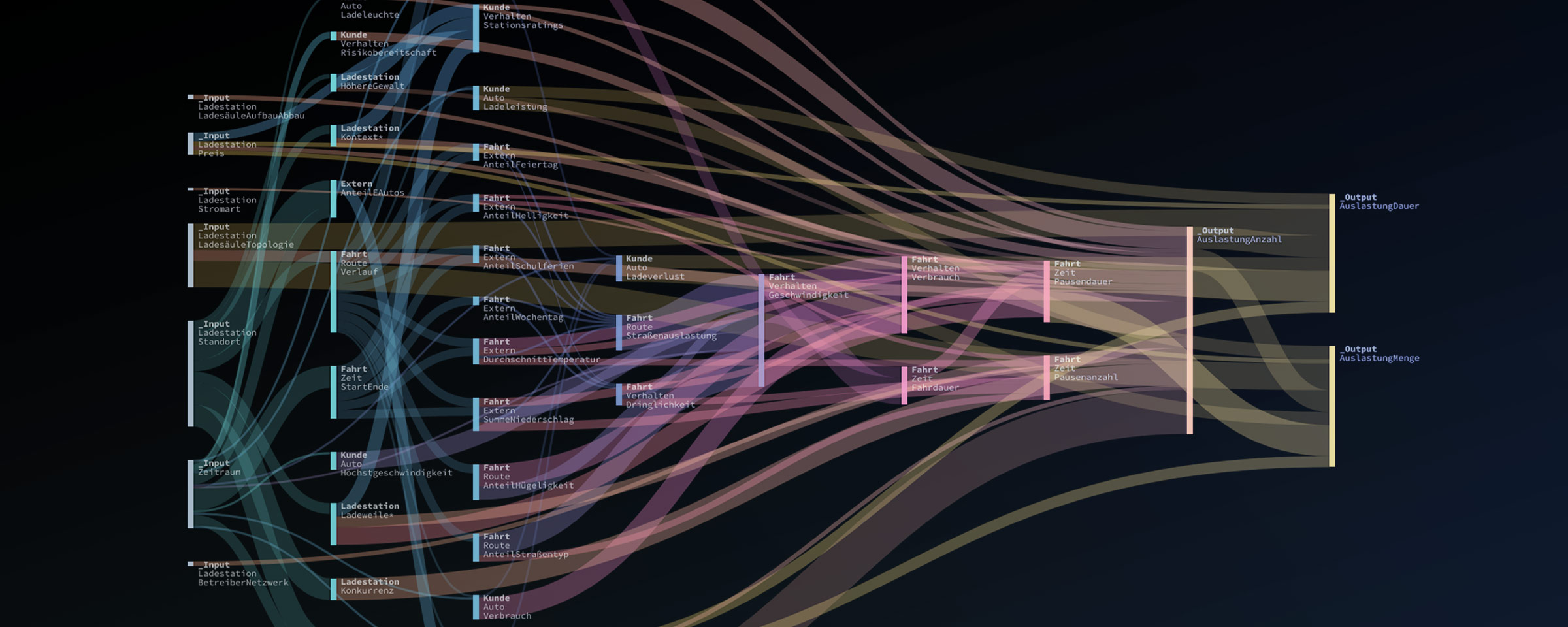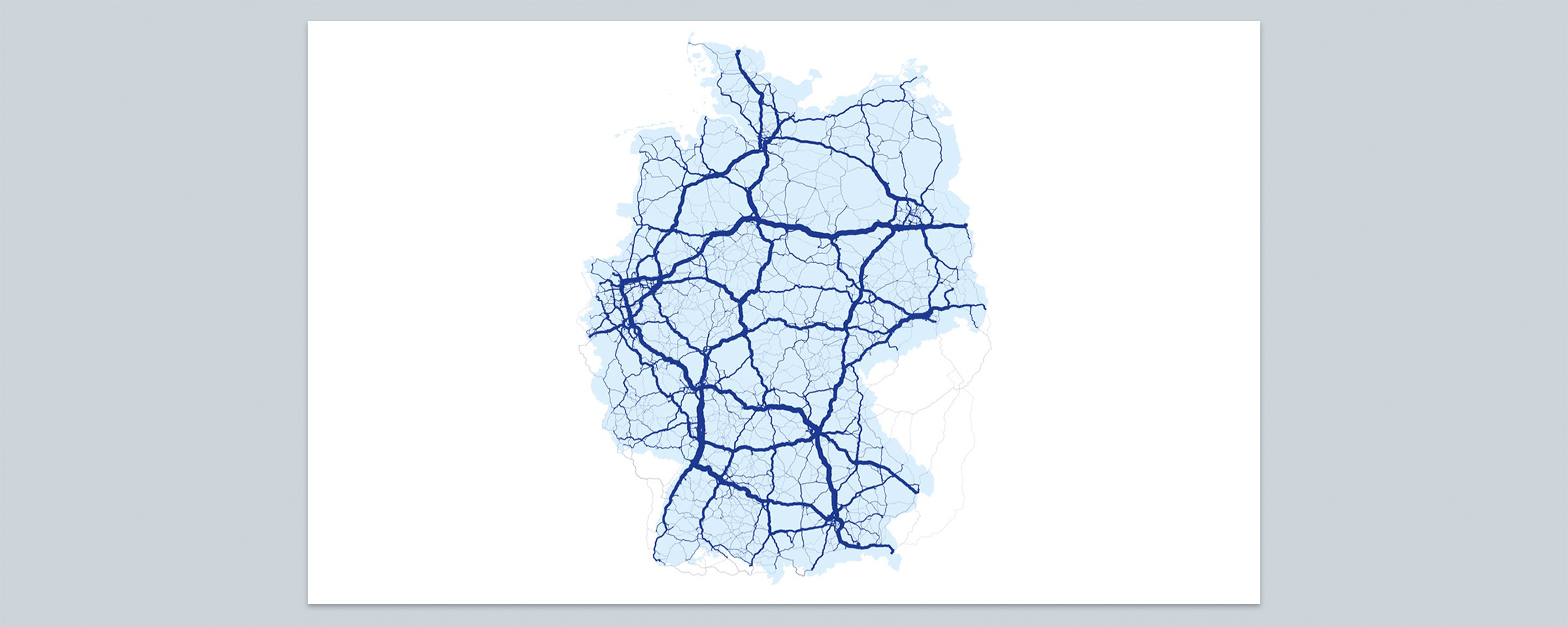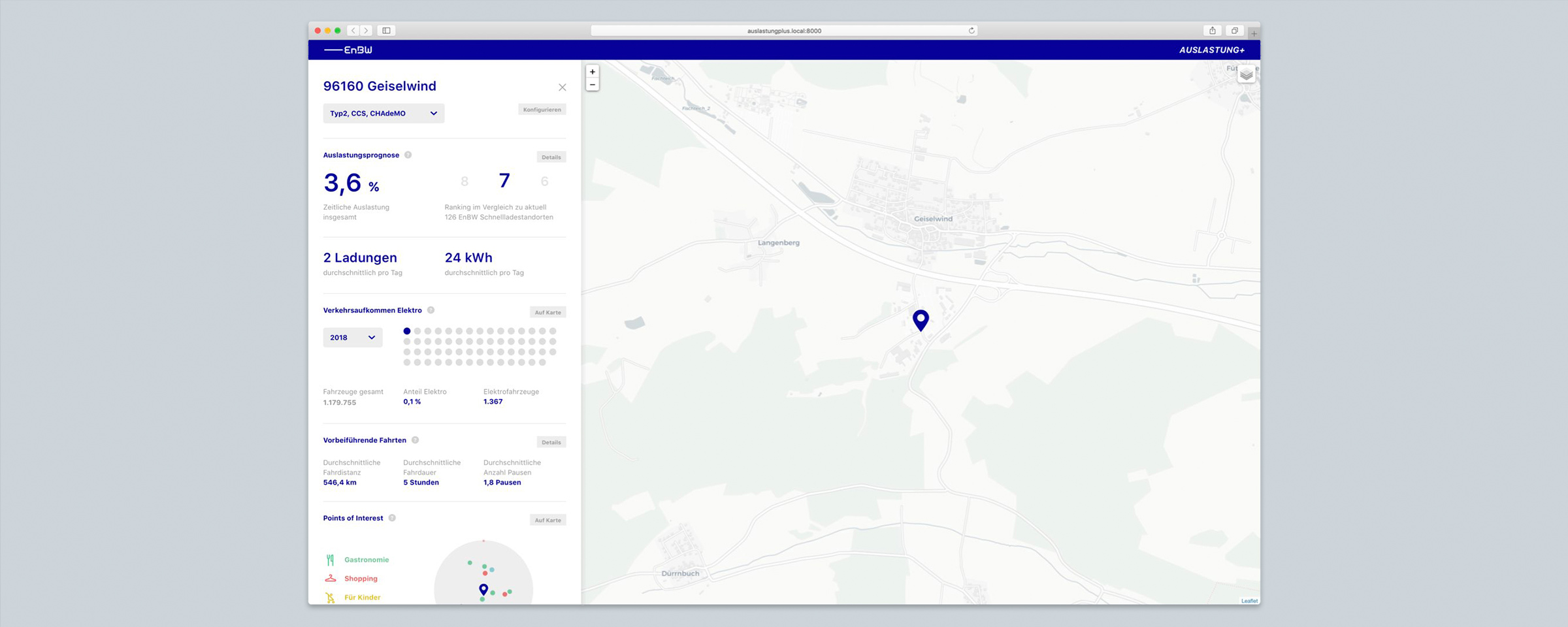
Moving targets - Infrastructure expansion and location determination
For many questions and challenges of our time, we will have to find local solutions in cities and their infrastructure. When expanding infrastructures, targeted collection, curated preparation and algorithmic evaluation of data give us more security in decision-making. The economic advantage can be enormous.
For example, we can gain insight into the areas in which energy requirements will increase in the future, which type of generation and storage makes the most sense for the location-specific conditions and how we can optimally network them, distribute them across the board and connect them to the existing infrastructure. As an update to CO2-neutral technologies takes place in the existing generation landscape at the same time, complex models and decisions are necessary.
Solutions for the challenges in the area of mobility are sought, among other things, in multimodal mobility concepts and electric mobility. From data and the motivational structures of different user groups, we learn where it makes sense to roll out mobility concepts for the last mile, where we have to bundle and at which locations the need for energy charging stations will increase in the future.
We can make better decisions about infrastructure and new business locations, manage traffic, and make cities more livable.
Moving targets in data analysis
The volatility and increasing complexity resulting from networking lead to a fundamental change of the basic conditions and in some cases by leaps and bounds. In mathematics, this change in a state within a system is called bifurcation. Once goals have been decided, changing parameters suddenly turn into “moving targets”. How can we better shape or even predict the direction of moving targets?
Data models depict the relationships between the data and describe an “objective” section of reality - aggregated, abstract and simplified. We can primarily read correlations from heterogeneous factors. They may suggest causal dependencies, but they are difficult to validate. Despite the uncertainties, there are of course better and worse design decisions. Prototypes help us to make data and relationships visible at an early stage.
Moving targets - user needs as a navigation aid
If we superimpose statistical evaluations of quantitative data, we get an average that shows a past median. The range, outliers, and subgroups are lost. Based on the aggregated approach, we do not get any information about what the motivation of individuals is, which leads to decisions, which influencing factors play a role and how we can change them in the future.
Here, design methods help to analyze and reveal the motivational structures and needs of individual people and user groups. We call this a disaggregated approach. It helps us form better hypotheses about how decisions can change in different circumstances. It gives us information in which direction moving targets are pivoting and how we can help shape the course.
Synthesis and basis for decision-making
Both approaches complement each other and help us make better assumptions, simulate them and derive scenarios. They combine user needs, the added value of new technologies with the expertise and goals of cities and companies. They give us information about how people and systems can react to changing input conditions or spontaneously occurring influencing factors. We leave the statistical and enter the design space to understand the market, influence it and make better investment decisions.



For example, together with EnBW, we were able to create a model for forecasting the utilization of future quick charging stations. The prototype planning tool, called “Auslastung+”, is supporting the team of EnBW in the strategic location selection for the EV charging infrastructure. The recommendations are calculated from real traffic flow data, user needs, and comprehensive location factors, which were summarized in a domain model.